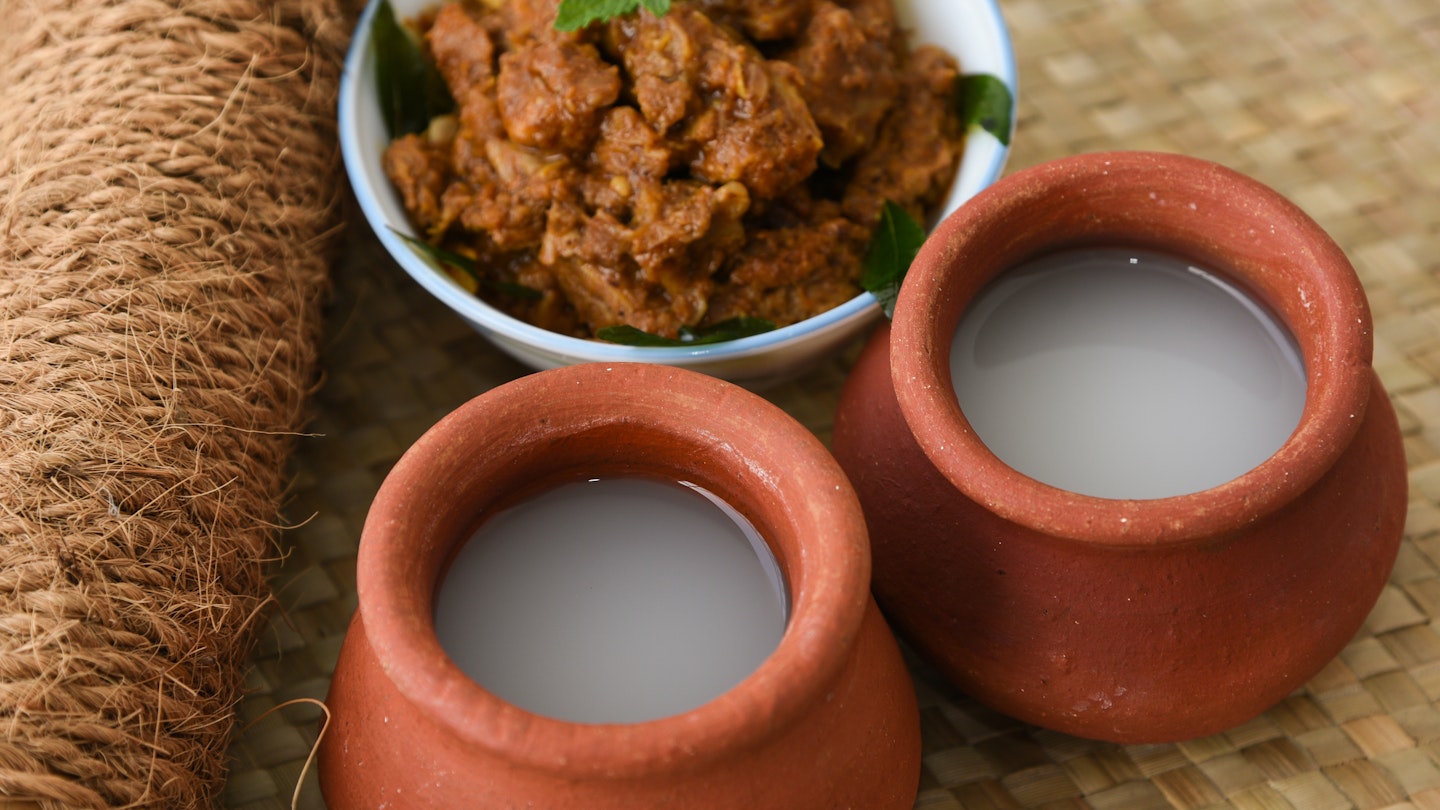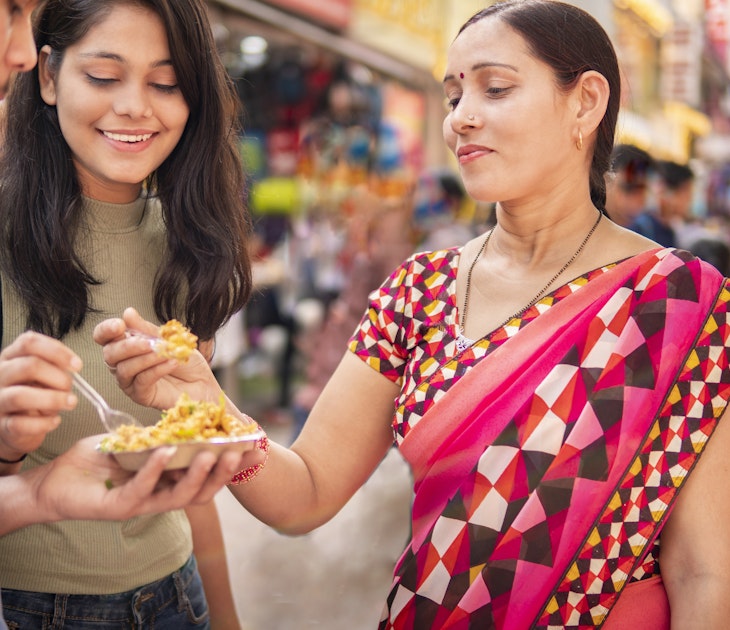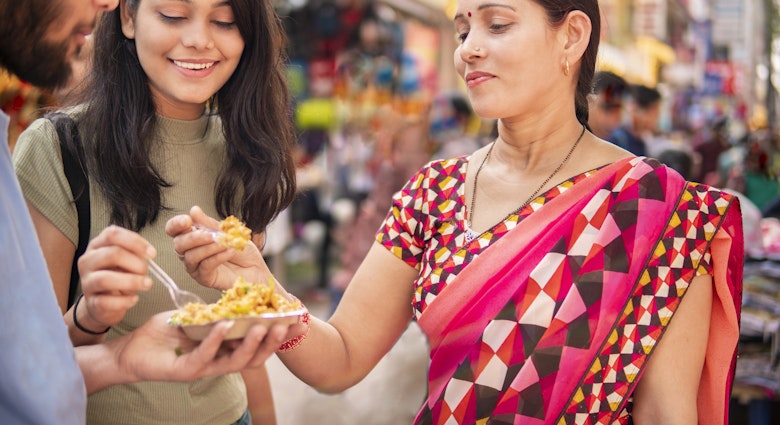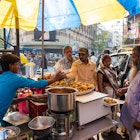Multiple trusted sources assured me a trip to a toddy shop was going to be the ultimate Keralite experience; the milky white, fizzy coconut wine is one of India’s best-loved beverages; I didn’t know it was going to be a lifeline for my burning tastebuds, too.
A sparkling, boozy drink made of the sap of coconut palm trees, there are more than 3500 toddy shops in Kerala, selling a bottle for around ₹90-110 (about £1.20/$1.40) a liter. During lockdown many jobs, including those of farmers leasing out their palms and palm tappers, have been on the line.
After nearly two months, toddy workers are now returning to business as usual, tapping an average of 300,000 liters per day. The result is a fermented delicacy with a shelf life – if unrefrigerated – of just 24 hours; any longer and the sourness can become unbearable.
One of the most unforgettable love affairs of my foodie life was just a short car ride from Kochi. My stay there was drawing to a close, the flight that would take me and my travel buddy to Mumbai was just a couple of days away. In Maharashtra, toddy shops had been formally banned several times over the last few years, making Kerala our last chance for a sip.
The toddy shop experience
Together with another friend who had had her toddy baptism months prior, we brave the torrid, humid weather to drink what is called kallu in Malayalam, the language of Kerala, to differentiate it from non-alcoholic toddy. Half an hour later, we reach Udayamperoor, to a renowned toddy shop called Mullapantha on the MLA Road. Its multicoloured facade is the entrance to a solitary oasis in an otherwise dusty, deserted street scorched by the 45°C heat.
In a jarring contrast with the brightly colored exteriors, the toddy parlour is poorly lit, with a handful of plain, laminated plastic tables and chairs scattered around. A glance at other patrons confirms we are the only women there and at least half a dozen pairs of eyes are staring at us. My friend asks for our much-anticipated jug of toddy and starts ordering dishes with a sly smile. I’m unfazed. I can handle the spiciness... I think.
A series of plates parades in front of us: shrimps swimming in a rich, brown curry sea, redfish curry with tapioca, and, of course, appams. These addictive, extra thin, lacy pancakes made of rice flour and coconut are the complement to most meals in the south and help handle piping hot food.

Right after sinking my teeth into thick, juicy cuts of pork fillet dunked into lava-like hot sauce, my greasy hand stretches out to grab the glass of toddy in front of me, ready to work its magic. This mildly sour, bubbly wine is the only drink that can get you through such a meal. Milky and opaque in color and light in texture, kallu rolls off the tongue as easily as water and is effective in soothing the sensation of your combusting mouth.
Dipping my fingers into hot sauce and chugging kallu morphs into one seamless sequence. I repeat it until the dishes in front of me are empty and my stomach happier than anticipated, filled with the most challenging, genuine south Indian dainties.
Back home
I still think about my Keralite toddy whenever I spot restaurants promising authentic south Indian food in north London. As I skim through their menus before walking past, I know what I'm longing for is more than just a glass of coconut palm fizz. I know that no place, however pretty, can give me back that sense of visceral enjoyment of food and drink found in one small toddy shop in Kerala.
You might also like:
A perfect weekend in Kochi
Where to get off the beaten track in India
Discovering Mumbai's best street food











